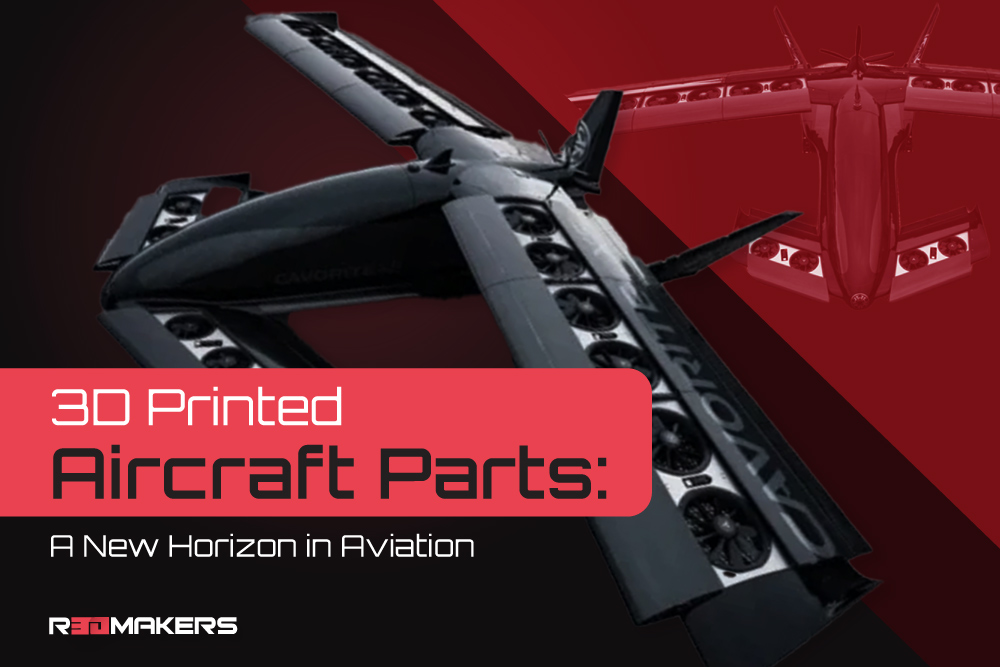Exploring 3D Printed Aircraft Parts: A New Era for Aviation
The aerospace sector, an industry synonymous with precision and innovation, is undergoing a transformative change. This metamorphosis is characterized by the adoption of 3D printed aircraft parts , heralding a new era in aircraft design, manufacturing, and maintenance. The potential of 3D printing in aviation is no longer in the realm of science fiction; it’s here, and it’s redefining the industry.
This technology, which was once relegated to prototypes and models, has found practical, robust applications in real-world aviation scenarios. As aircraft manufacturers seek to optimize efficiency and reduce costs, 3D printing emerges as a formidable ally. Its adaptability and precision are ushering in unparalleled benefits for the aviation landscape.
Transforming Aerospace: Enhancing with 3D Printed Aircraft Parts
3D printed aircraft parts are not only making waves in the creation of new aircraft but also in the refurbishment of older models. Traditional manufacturing methods can be restrictive, often requiring expensive molds and long lead times. However, 3D printing, as highlighted by Aviation Today, presents a valuable opportunity to reproduce parts for legacy aircraft. This process is especially vital when the original manufacturers no longer produce these components.
By recreating these parts, 3D printing is ensuring that older aircraft can remain serviceable and efficient. The emergence of 3D printed aircraft parts also allows for more rapid iterations, meaning aircraft design improvements can be implemented quicker than ever. Such speed is essential in an industry that requires constant adaptation to changing demands and technological advancements.
Stratasys Direct underscores the transformative potential of 3D printing aircraft interiors. The traditional methods of designing aircraft interiors are often cumbersome, with significant constraints on customization. But with 3D printing, there’s a newfound flexibility. Designs can be more intricate, lightweight, and tailored to the specific needs of an airline, without incurring exorbitant costs.
This revolution not only aids in achieving fuel efficiency but also offers passengers an enhanced in-flight experience. When passengers board an aircraft, their comfort and the ambience of the cabin play significant roles in their overall experience. By enabling bespoke, ergonomic designs, 3D printing promises a future where each flight is unique and memorable.
Will Entirely 3D Printed Aircraft Soon Take Flight in Aviation?
3DPrint.com raises an intriguing proposition: the reality of entirely 3D printed aircraft. While this might seem like a distant dream, the rate at which 3D printing aerospace parts is advancing suggests that such an outcome might not be too far off. The key lies in the multiple benefits offered by 3D printing. For starters, 3D printing aircraft parts can lead to lighter yet durable components. Weight is a critical factor in aviation. Even a marginal reduction can lead to significant fuel savings.
With the flexibility of 3D printing, manufacturers can produce parts with complex geometries, optimizing strength while eliminating unnecessary material. Additionally, this technology offers potential savings in material costs, as there is less waste produced in the printing process compared to traditional subtractive methods.
Moreover, the environmental footprint of 3D printing in aviation can be substantially lower than conventional methods. Reduced waste, coupled with the potential to use eco-friendly materials, could make aviation 3d printing a more sustainable choice in the long run. With environmental concerns at the forefront of global discussions, any innovation that promises sustainability is eagerly welcomed, especially in industries known for their significant carbon footprints.
From Parts to Processes: Revolutionizing with 3D Printed Aircraft Parts
The impact of 3D printing on aviation is holistic. Beyond the tangible components, the very processes of design, prototyping, testing, and production are undergoing a shift. Iterative testing becomes quicker and less expensive. Customization, earlier a luxury, is becoming the norm. Supply chains, often complex in the aerospace sector, can be streamlined, as parts can be printed on-demand, closer to where they are needed.
As aviation companies look towards leaner, more efficient operations, 3D printing stands out as a catalyst for change. By reducing dependencies on vast inventory stocks and enabling just-in-time manufacturing, companies can respond more nimbly to market demands.
Embracing the Future of 3D Printed Aircraft Parts
3D printing in aviation is not just a technological marvel; it’s a paradigm shift. As 3D printed aircraft parts become increasingly prevalent, they’re setting the stage for a more efficient, customizable, and sustainable aerospace sector. The boundaries are being pushed, and as the technology matures, the day might not be far when entirely 3D printed aircraft grace our skies. In the interim, every 3D printed component marks a step towards that exciting future. This is not just evolution; it’s a revolution, poised to redefine the contours of aerospace engineering and design.
Beyond the immediate benefits to aircraft design and manufacturing, the adoption of 3D printed aircraft parts in aviation signals a broader transformation in the industry’s approach to innovation. The traditional barriers of cost, time, and resource-intensive processes are giving way to agile, adaptive, and forward-thinking methodologies.
As collaboration between aerospace engineers, materials scientists, and 3D printing experts intensifies, we’re on the cusp of witnessing multifaceted advancements that encompass safety, passenger experience, and operational excellence. The convergence of these disciplines, powered by 3D printing, promises not only a new chapter in aviation history but also a brighter, more inclusive future for global travel and connectivity.

